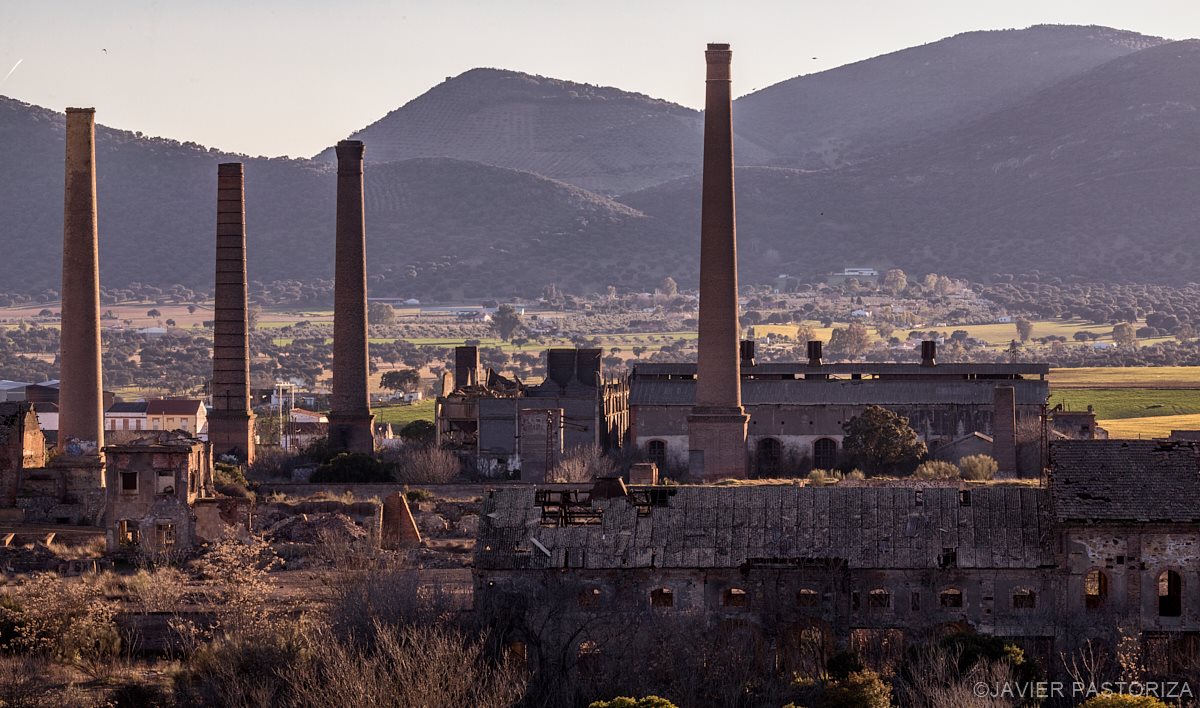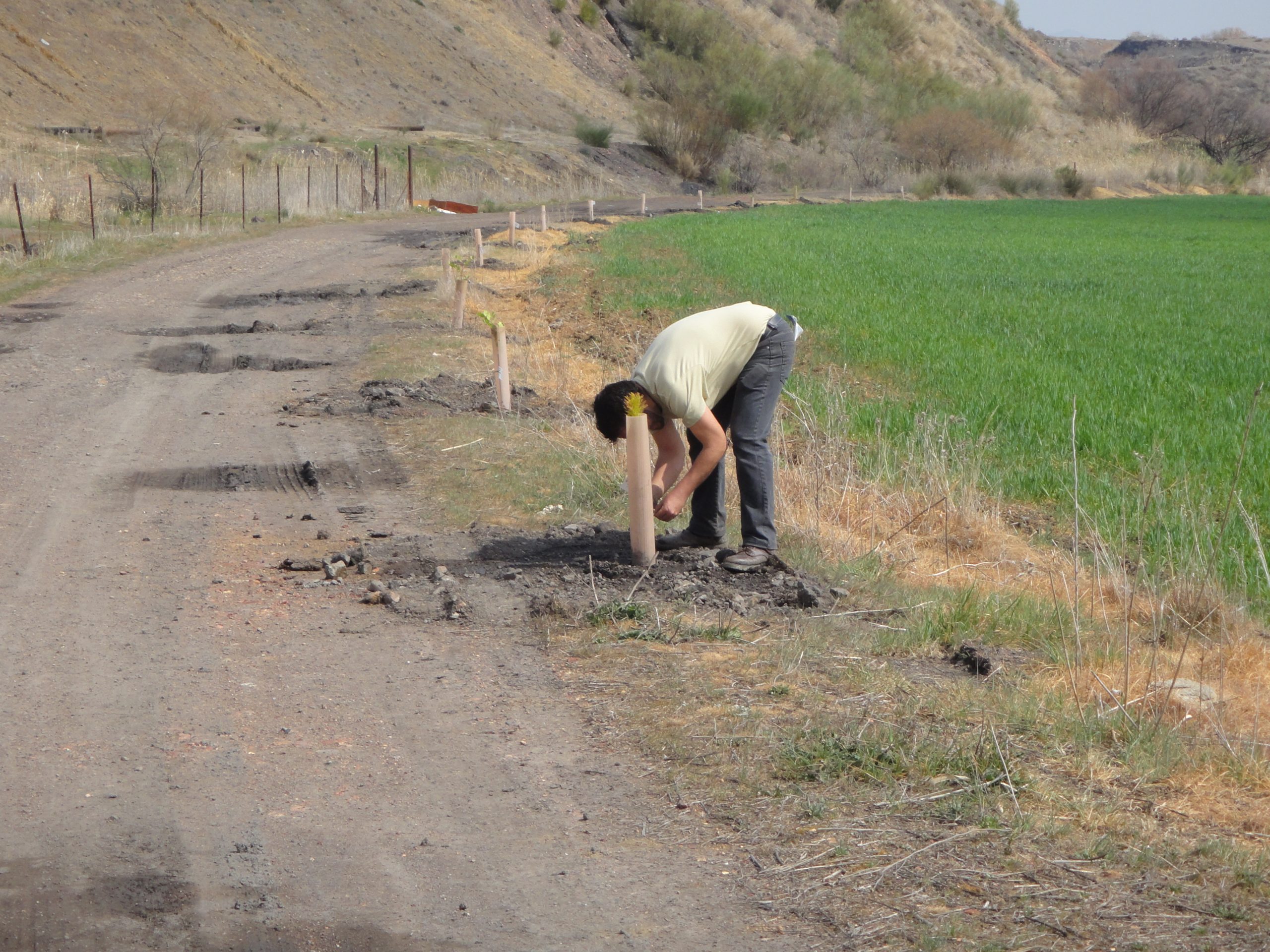La Maquinilla Association is a regional collective founded in 2011 in Peñarroya-Pueblonuevo, in Córdoba, a municipality that between the late nineteenth and mid-twentieth centuries became one of the most prosperous in Andalusia for its mines and industries; a municipality that between the late nineteenth and mid-twentieth centuries became one of the most prosperous in Andalusia for its mines and industries and that today, after the closure of all of them, has, despite the routine plundering and according to various experts, one of the most important Heritage of Industrialization in Spain and the second most important set of industrial brick chimneys in southern Spain.
Although the objectives stated in our statutes include the defence, promotion and investigation of the industrial, mining and railway heritage of the Guadiato Valley, the origin of our union was anger at the neglect and abandonment of what we consider to be our industrial hallmarks by our authorities and also by our neighbours.
When we decided to organise ourselves the situation we found ourselves in:

- Numerous abandoned industrial heritage sites, without legal protection and in a phase of spoliation, if not permitted, then consented to by our authorities. The most paradigmatic example is the first Cerco Industrial de Peñarroya, which since the 1970s has been a real illegal supplier of building materials for local housing and the main source of income for local scrap metal dealers.
- Lack of financial resources for its development. Although in the last two decades there have been some interesting successes in heritage recovery, we have to recognise that the money was not properly used to get more out of our heritage, from a general point of view. To make matters worse 2011 had meant the end of aid to the mining districts for business and heritage projects and we were in the most serious phase of the economic crisis that forced our municipalities and associations of municipalities to reduce spending to the bare minimum.
- Social rejection. To all of the above was added the low value, if not contempt that the majority of the population felt towards everything that meant their livelihood and that of their ancestors. There was a great lack of heritage education of our people about some remains that are seen as the symbol of what they consider to be a failure as a society. Many people in our municipality do not aspire like their grandparents to see the factories return to production in that dreamlike exercise that only those who have been stranded by progress can do, but rather they directly ask for it to disappear, like a useless object in the landscape.
- A profound lack of knowledge on the part of our public leaders. It is quite accepted in democracy that GOVERNMENTALISTS are the REFLEX of the societies that vote for them or that LIVE in a particular place. Logically, if our citizens despise their own heritage, we cannot expect our representatives to show much appreciation for it, either from a purely cultural point of view or simply from a pragmatic point of view.
- No tourist use of these assets. If all or almost all of the Industrial Heritage is abandoned and/or plundered, there were no economic resources that would allow large investments to be made in restoration, there was no involvement of the public and of the public authorities to enhance its value, it is only logical that no tourist revenue could be extracted from it.
- Degraded spaces. Finally, we have to add an exclusive characteristic of Industrial Heritage that conditions its enhancement if we compare it with other types of Heritage and that is the CONTAMINATION of the spaces where it is located as well as its structures. The land on which our Industrial Heritage is located is highly polluted, which makes it more expensive to enhance its value and, above all, poses a health risk to those who wish to visit it.
GREENWAYS AS AN OPPORTUNITY FOR OUR INDUSTRIAL HERITAGE
There were multiple solutions to our problems. In fact, there are other groups in the area dedicated to this issue that have opted for other strategies. Our proposal was to take advantage of the abandoned railway lines that run through the region from east to west and from north to south, entering into our industrial areas as greenways.
Why did we do it?

- Direct profitability of abandoned industrial sites. A Greenway built next to abandoned spaces allows them to be made accessible to people from the outset, while the funds needed for the restoration of other surrounding spaces arrive in a cheap, safe and effective way
- Social approach to Industrial Heritage. The fact of using old railway lines as a greenway makes it easier for our neighbours to learn about their history and brings them closer to their culture. Moreover, RAILWAY TRACKS ARE MONUMENTS IN THEMSELVES as thousands of workers, ancestors of the inhabitants of the Guadiato region used this means of transport to work or to occupy their leisure time (football matches, bullfights…). The old railway lines allow people to connect with the life of their ancestors.
- Tourist exploitation of our points of interest. All these elements, separately, and in the very poor state of preservation in which they are in their presentation, do not represent a tourist reference point. Presented in a package with the ribbon of a Greenway, it becomes a real treat for the senses. Vías Verdes are an international brand whose distinctive feature, by the fact of having it, attracts many lovers of cycling and sustainable tourism.
- Rehabilitation of degraded landscapes. Since the route of La Maquinilla was recognised as a Greenway, more than 800 trees and bushes have been planted along the route and in the surrounding area, and mining cones, slag heaps and dumps have been rehabilitated. The Greenway in the mining areas has meant an ENVIRONMENTAL REVOLUTION on land that was formerly reserved for dung heaps.
We also understood that to fight exclusively for the conversion of a railway line into a greenway would be to make the same mistake that our institutions have been repeating for 20 years, such as restoring buildings without giving them content.



